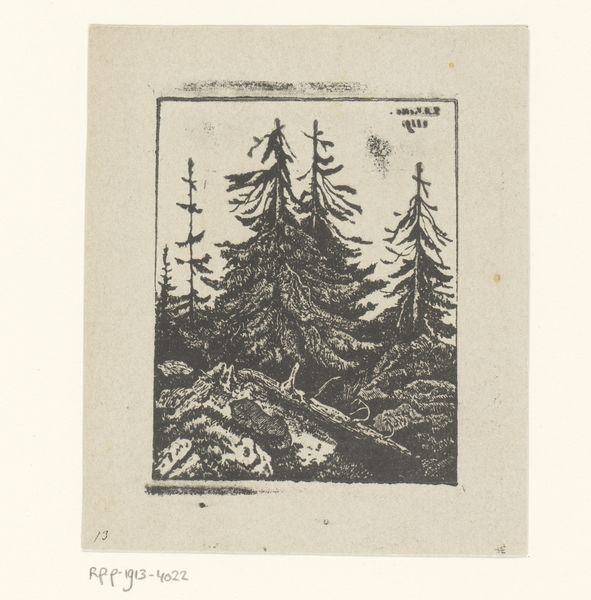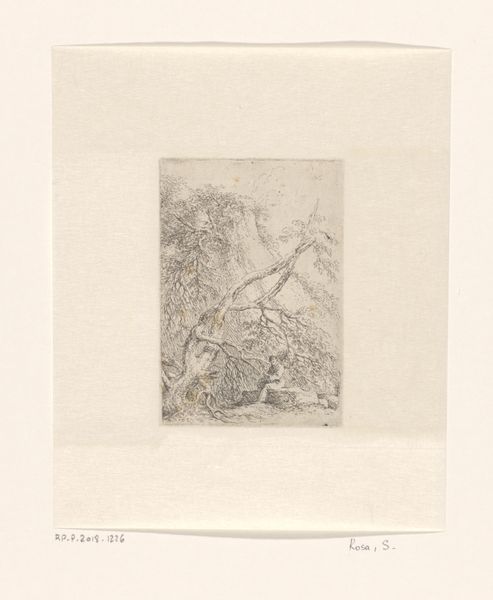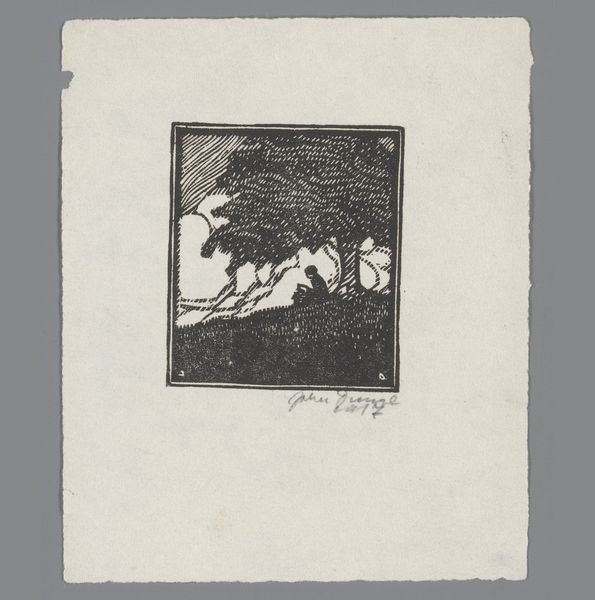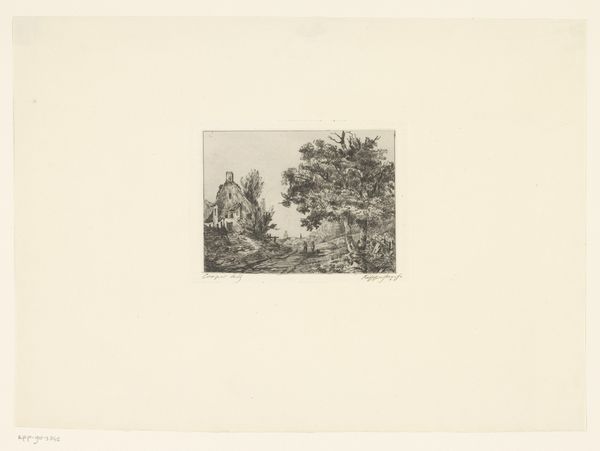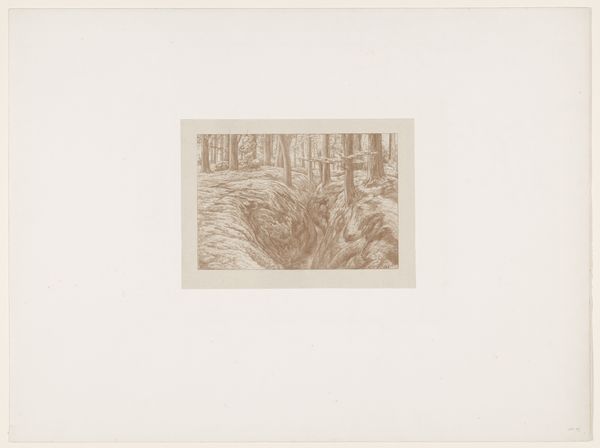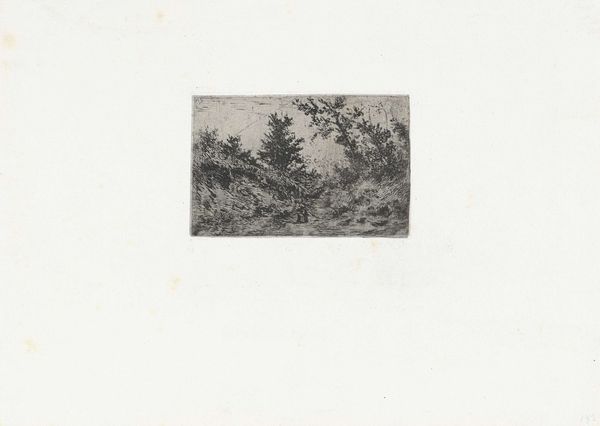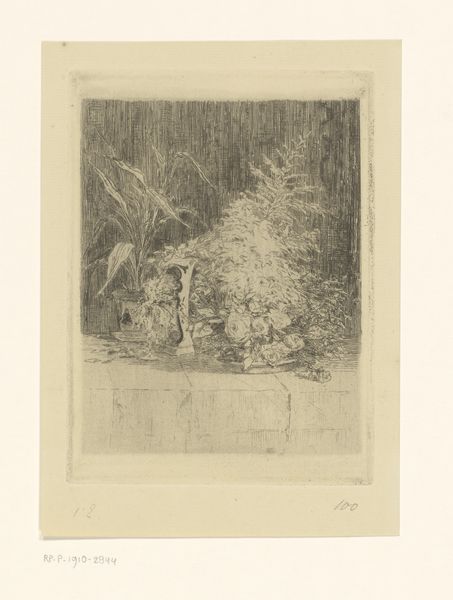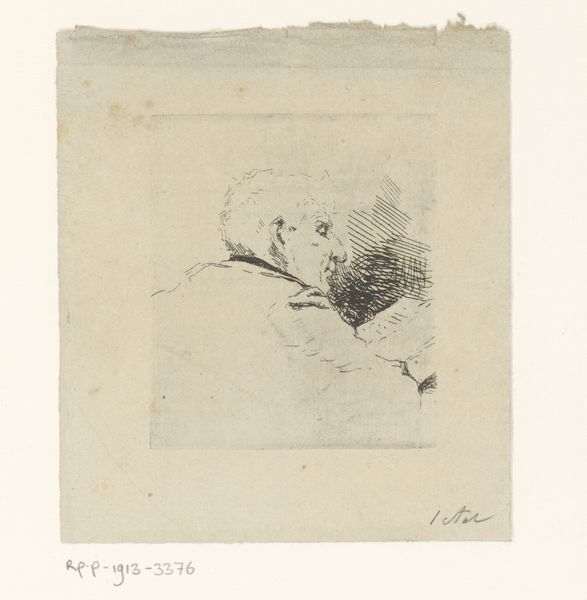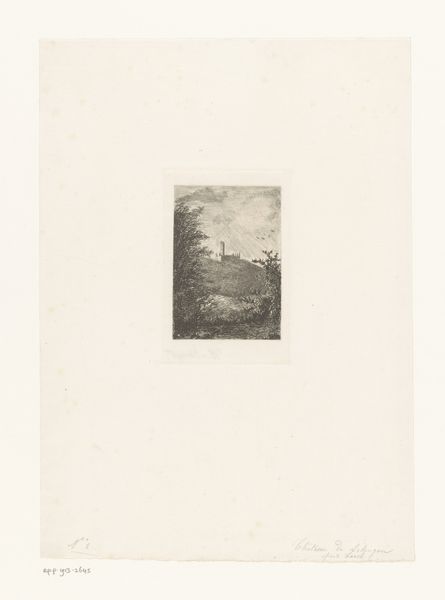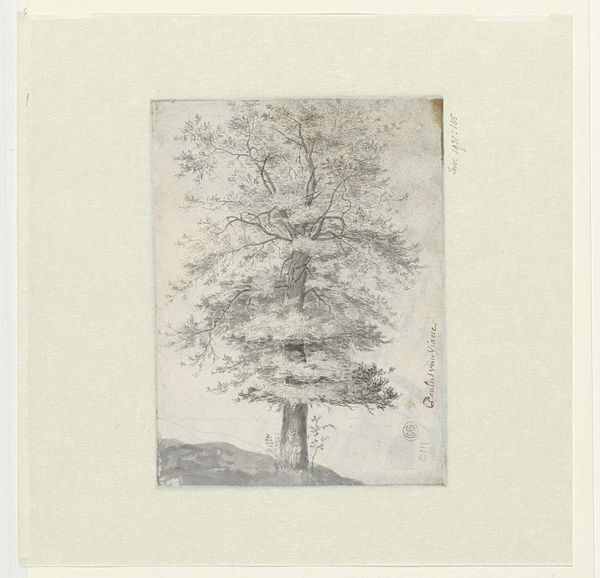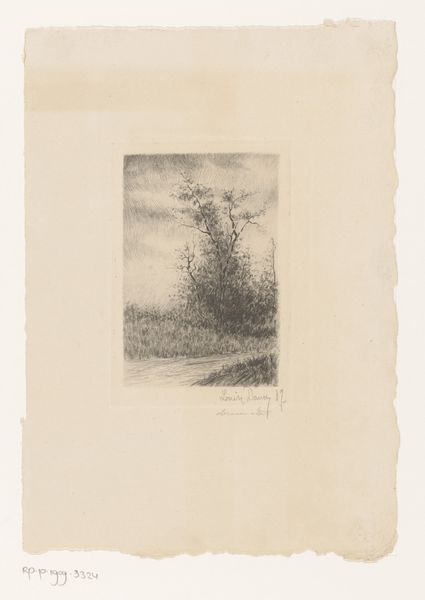
Dimensions: height 63 mm, width 54 mm
Copyright: Rijks Museum: Open Domain
Curator: Looking at this etching, “Landschap met naaldboom” or “Landscape with Conifer”, I’m struck by its stark beauty. It was created in 1859 by Polynice Auguste Viette, using etching techniques on paper. Editor: Yes, there is something inherently lonely about it, almost haunting, like a scene from a gothic novel. It feels intentionally somber. I’m very drawn to the texture rendered via these clear linear marks. Curator: The Romantic movement heavily influenced the art of this era. This explains the prominence of nature, emphasizing an emotional connection to landscape. And Viette was definitely engaging with current artistic trends through this specific medium. The choice of etching speaks to the increasing accessibility of printmaking, moving art from elite circles to a broader audience, facilitated by the advances in mass production during this period. Editor: Precisely! The composition directs our attention; the conifer dominates the foreground, while the linear marks render a mountain range far off in the distance, almost as an afterthought. The contrast underscores not only the grandeur of nature, but, as per romantic notions, the overwhelming experience of facing it. And given the medium and its dispersal of imagery, how do we then examine this landscape as an access point for citizens of the day? Curator: A crucial question, I think! Art during this time played a role in constructing national identity, so how did landscape imagery assist this political aim? Think of how these serene visions of nature interacted with, or perhaps obscured, the harsh realities of industrial labor occurring concurrently in the nineteenth century. Editor: A blind spot, perhaps. Viette offers an idealized version of the natural world, neatly packaged and delivered to the rising middle class who consumed images of progress and national unity through art markets, like this very landscape. The ability to consume it made it powerful, more than just aesthetically interesting. Curator: Certainly, there are powerful narratives woven within the material realities and distribution of artworks such as this. Thanks to its accessibility, it invited contemplation of Romanticism's core concepts across broader sectors of the European public, and for the generations to come. Editor: Indeed, making it all the more fascinating that we're able to view it together in a modern museum collection such as this.
Comments
No comments
Be the first to comment and join the conversation on the ultimate creative platform.
